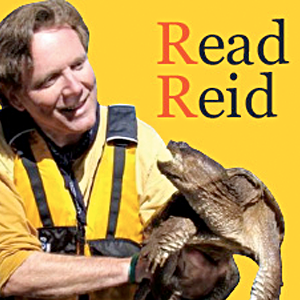
Feed songbirds in winter, not mammals
Old man winter rode the polar vortex across the country into New England – bringing single digits at dawn – twice these last two weeks. Despite the deep cold, so far this year The Last Green Valley has been spared major blizzards,
Winter conditions create hardships for wild animals to find food and maintain body energy to survive the cold. Our natural inclination is to help wild animals and it is possible to find wild animal food in stores specializing in feed. Corn, both whole and cracked, pellets and mixtures of grains and forage products, as well as salt and mineral licks are available. With this in mind, I thought it might be helpful to share information about the do’s and don’ts of feeding wild animals.
It is important to remember that for millennia, wild animals have evolved and adapted to cope with weather and seasonal extremes. In winter that means deep snow, cold temperatures and high winds. Wildlife biologists will note that feeding wild animals in winter can have negative consequences for the animals and they caution against it — with the exception of songbirds.
One of the problems with feeding neighborhood wildlife is the results can be a sudden concentration in numbers not typical for your location, with possible unintended consequences. That doe and two fawns at the corn pile can quickly turn to 10. When the corn runs out, they may decide to check out those tasty prized shrubs and flowers you planted.
The food you provide also has the potential to attract both prey and predator species, some of which can be dangerous to humans, such as bear, coyote, fox and fisher. Congregating animals at a food source will cause competition and fights with possible injury or worse to the animals. Their proximity to each other can also lead to the spread of disease and parasites among the animals.
Feeding wild animals in your backyard attracts them out of their natural habit, possibly crossing roads and highways where the danger of vehicle collisions increases. Feeding stations also cause wild animals to become dependent on the food you provide, altering their natural foraging and hunting behaviors.
As tempting as it is to feed deer during the winter months, the Connecticut Department of Energy and Environmental Protection’s Wildlife Division discourages this. Deer have evolved to get through the winter months by growing a thick winter coat each fall with hollow outer hairs that help with insulation and heat retention. In fall, they store fat to provide energy during winter. Deer also reduce their metabolic rate in winter, reducing their food requirements by about 50 percent compared to summer.
Helpful information about feeding deer in winter can be found at the DEEP Wildlife website at
https://www.ct.gov/deep/cwp/view.asp?a=2723&q=573020
Many Americans feed wild birds, and I am happy to be included in that group of bird-lovers. Bird watching is one of the most popular hobbies and putting out feeders is a great way to enjoy our region’s variety of bird species.
So, why is bird feeding okay, but not mammal feeding? It all comes down to size and behavior. Birds’ feeding habits and their small size make them far less likely to become threats to humans and property. A black-capped chickadee will enjoy your sunflower seeds and suet but is not likely to knock over your garbage cans or confront you on your back porch looking for additional handouts.
Birds are as likely to feed within their natural habitat as they are at a feeder. The winter birds at my house enjoy berries and seeds left on several shrubs planted around our house as much as seeds and suet put out for them in our feeders.
It is also important to remember that feeding birds is recommended only from early December to mid-April to prevent attracting bears. In early spring, when bears first emerge from hibernation, they will be hungry for whatever they can find – including your bird feeders.
By the spring nesting season, insects, worms, caterpillars and early fruits and seeds will provide all the food birds need. After all, they were here and doing just fine before we began the practice of putting out feeders.
While we encourage feeding songbirds in winter, the feeding of waterfowl is discouraged. Despite frozen lakes and ponds, our ducks and merganser are still able to find open water for feeding. Human foods such as bread do not provide the right nutrition and may cause health problems. Putting out cracked corn can attract too many ducks, geese and even gulls to one location, contributing to the spread of disease.
Over the past several decades our region has seen many species of wild animals return. We have the habitat they prefer with 77 percent of our land remaining forest and fields. We have laws that favor conservation, protection and careful management of our wildlife. The result has been an increasing number of bear, fox, coyote, bobcat, fisher and deer. We now have bird species — wild turkey, herons and raptors such as bald eagle, osprey, hawks and owls — in greater numbers than before.
We share our neighborhoods and towns with a variety of wild animals that help define our region’s rich and diverse natural resources. Just as surely as they were traversing our backyards, woods, forests and fields in the fall, so too will they be there come spring when the cycle of rebirth turns again.
We live in a region named The Last Green Valley National Heritage Corridor. I hope you’ll join me as we care for, enjoy and pass on this beautiful land we call home.
Bill Reid is chief ranger of The Last Green Valley National Heritage Corridor and has lived in the region for more than 35 years. He can be reached at bill@tlgv.org.
Get Connected
Sign up for our newsletter
"*" indicates required fields



